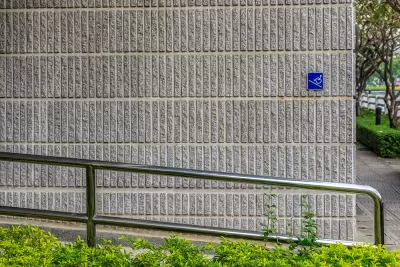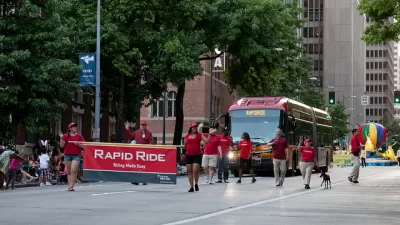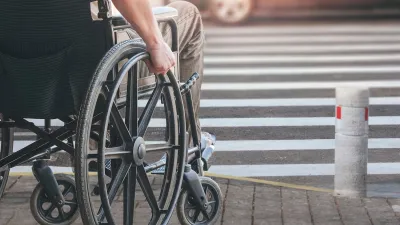A call for the country to focus its infrastructure investments to the most vulnerable and neglected populations—and watch the benefits compound.

Angela Glover Blackwell writes of the "Curb-Cut Effect"—the benefits to the general welfare as an effect of laws and programs designed to benefit vulnerable populations.
The article starts with an anecdote about a guerilla mobility action in Berkeley in the early 1970s, when Michael Pachovas and a few friends "poured cement into the form of a crude ramp" as a political action to support the mobility of the disabled community. The action later became referred to as "the slab of concrete heard 'round the world," paving the way for the adoption of the Americans with Disabilities Act.
The curb cuts required by the ADA, however, precipitated a new era of mobility for the larger population as well. "When the wall of exclusion came down, everybody benefited—not only people in wheelchairs. Parents pushing strollers headed straight for curb cuts. So did workers pushing heavy carts, business travelers wheeling luggage, even runners and skateboarders," writes Glover Blackwell.
From that example from the physical environment Glover Blackwell expands the argument to the demographic realm, noting that "[p]olicymakers tend to overlook the ways in which focusing on one group might help all groups and strengthen the whole nation." More examples and arguments focusing on the physical environment, like bike lanes and bus service, follow later in the article.
FULL STORY: The Curb-Cut Effect

Rethinking Redlining
For decades we have blamed 100-year-old maps for the patterns of spatial racial inequity that persist in American cities today. An esteemed researcher says: we’ve got it all wrong.

Montreal Mall to Become 6,000 Housing Units
Place Versailles will be transformed into a mixed-use complex over the next 25 years.

Planetizen Federal Action Tracker
A weekly monitor of how Trump’s orders and actions are impacting planners and planning in America.

LA ‘Mobility Wallet’ Increased Quality of Life for Participants
The city distributed a monthly $150 transportation subsidy to 1,000 low-income Angelenos. It dramatically improved their lives.

Texas, California Rail Projects Seek Out Private Funding
In the wake of Trump’s cuts to high-speed rail projects, rail authorities are looking to private-public partnerships to supplement their budgets.

Addressing Rural Homelessness in Kentucky
A Kentucky Lantern series focuses on the challenges unhoused Kentuckians face and efforts to provide support and assistance.
Urban Design for Planners 1: Software Tools
This six-course series explores essential urban design concepts using open source software and equips planners with the tools they need to participate fully in the urban design process.
Planning for Universal Design
Learn the tools for implementing Universal Design in planning regulations.
City of Camden Redevelopment Agency
City of Astoria
Transportation Research & Education Center (TREC) at Portland State University
Regional Transportation Commission of Southern Nevada
Toledo-Lucas County Plan Commissions





























